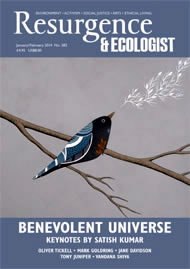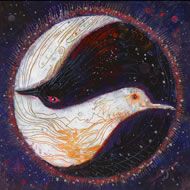We are all related. We are all connected. We are made of each other. The whole of existence is made of the same seven elements: earth, air, fire, water, space, time and consciousness. All these elements exist because of each other. No one element can exist by itself. There is a fundamental unity of life, which manifests in millions of forms. The unity and diversity are in an eternal dance. Quantum physics tells us that ultimately all is just one single energy: call it particles and waves!
Diversity does not mean division. Separation, fragmentation and dualism are mere perceptions fostered by external appearances. Dark appears to be opposite of light. Left appears to be opposite of right. Mind appears to be opposite of matter. But from a holistic perspective dark and light, left and right, mind and matter (and all the other apparent opposites) depend on each other and are complementary. The Chinese call it the harmony between yin and yang. There is yin within yang and yang within yin.
If we look at the world and see it as a whole we can heal all our political, religious, racial and environmental divisions with a single stroke. We can heal the division between science, spirituality and art; the division between head, heart and hands.
Plato proposed the idea of unity through the trinity of Truth, Goodness and Beauty. This three-dimensional philosophy represents a holistic worldview. Through science we seek truth, through spirituality we seek goodness, and through art we seek beauty. Then how can we put science, spirituality and the arts in three different departments or compartments?
Similarly with our heads we think and know the truth – that is science. With our hearts we cultivate and live goodness – that is spirituality. And with our hands we create and communicate beauty – that is art.
Thus science, spirituality and art are a continuum; there is no disconnection or division. Our body is a perfect example of this unity. We are made of all seven elements in perfect harmony. We can think. We feel. We make. We are whole. This sense of wholeness, completeness and relatedness is the first step towards sustainability.
The split between mind and matter started with the French philosopher René Descartes. He proclaimed the superiority of thought through his famous dictum, “I think therefore I am”. This Cartesian dualism became the foundation of Western philosophy and science. Gradually all our schools, universities and other educational institutions began to split knowledge into isolated subjects. Economy was taught without any reference to ecology; politics, without poetry; science, without spirituality; and every other subject was put in its own specialist department.
That tradition continues unabated. The study of parts is pursued without the presence of the whole. Students study the text without its context, psychology without anthropology; history without mystery; astronomy without arts. This partial education permeates into politics, business, medicine, agriculture and all other aspects of life. We divide the world into nations, religions, political and economic systems and above all make a division between humans and the rest of Nature. No wonder that we face multiple crises of environmental, economic, geopolitical and spiritual disharmony.
So we have to say goodbye to monsieur Descartes and see the world as an interdependent whole. We have to go beyond the idea of self-interest and embrace the idea of mutual interest, reciprocity and interdependence.
And this can be the philosophy of unity with which we start a New Year.







